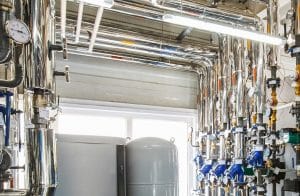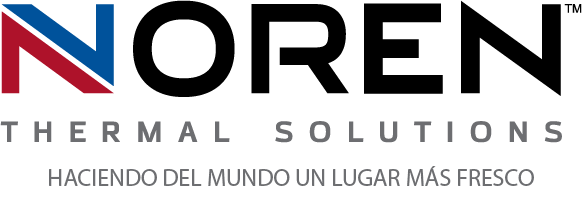 With their ability to make ambient cooling a viable solution for electrical thermal management, heat exchangers have long been recognized as some of the most efficient electrical cooling solutions. For most applications, ambient cooling is more than adequate to prevent electrical overheating, and the simplified processes by which heat exchangers transfer heat are significantly more cost and labor efficient than older solutions. However, ambient cooling isn’t always sufficient for every application; depending on its location, function, and specific operating parameters, many applications require below-ambient cooling to continue operating at optimal capacities. Fortunately, many of today’s heat exchangers are designed to achieve below-ambient cooling with just as much efficiency and at equally minimal costs as their ambient-cooling predecessors.
With their ability to make ambient cooling a viable solution for electrical thermal management, heat exchangers have long been recognized as some of the most efficient electrical cooling solutions. For most applications, ambient cooling is more than adequate to prevent electrical overheating, and the simplified processes by which heat exchangers transfer heat are significantly more cost and labor efficient than older solutions. However, ambient cooling isn’t always sufficient for every application; depending on its location, function, and specific operating parameters, many applications require below-ambient cooling to continue operating at optimal capacities. Fortunately, many of today’s heat exchangers are designed to achieve below-ambient cooling with just as much efficiency and at equally minimal costs as their ambient-cooling predecessors.
The basic principles of transferring waste heat
The reason traditional heat exchangers mainly provided ambient cooling is because their cooling processes relied on simply transferring waste heat, rather than cooling it down. To achieve this, heat exchangers house an eco-friendly cooling fluid that’s able to absorb large amounts of waste heat without allowing for any rise in temperature within the enclosure. Once the fluid absorbs enough heat, it evaporates, becoming less dense and easier to transfer away from the heat source. After the fluid releases the heat in a depository, such as a heat sink, it condenses back into liquid. This prevents any electrical waste heat from accumulating or escaping, which keeps the temperature inside of an electrical enclosure at just above the ambient temperature outside of it.
Traditional ways to achieve below-ambient cooling
For modern applications, or those that operate in extremely hot climates, ambient cooling may not be enough to prevent electrical overheating. Such systems require a solution that can bring temperatures down and maintain them well below the ambient temperature outside of the electrical enclosures, which is higher than the system’s maximum operating temperatures. This limitation has caused some companies to rely on older, more cumbersome cooling solutions, such as air conditioners and air compressors. Such solutions generate chilled air and circulate it through the enclosure to consistently maintain the colder temperatures necessary.
Equally efficient solutions for below-ambient cooling
In many modern applications that require below-ambient cooling, heat exchangers can often be developed to meet those needs. Below-ambient heat exchangers operate on the same basic principles of heat transfer that ambient solutions do. However, the cooling fluid used can be set at the appropriate temperatures to keep the electrical enclosures properly chilled. Specialized heat pipes or cold plates can be designed to facilitate the fluid’s flow through the heat exchanger, and to ensure its success at keeping electrical enclosures from overheating. For more information about how to make heat exchangers effective for below-ambient cooling, call Noren Thermal Solutions in Taylor, TX, at 866-936-6736.







